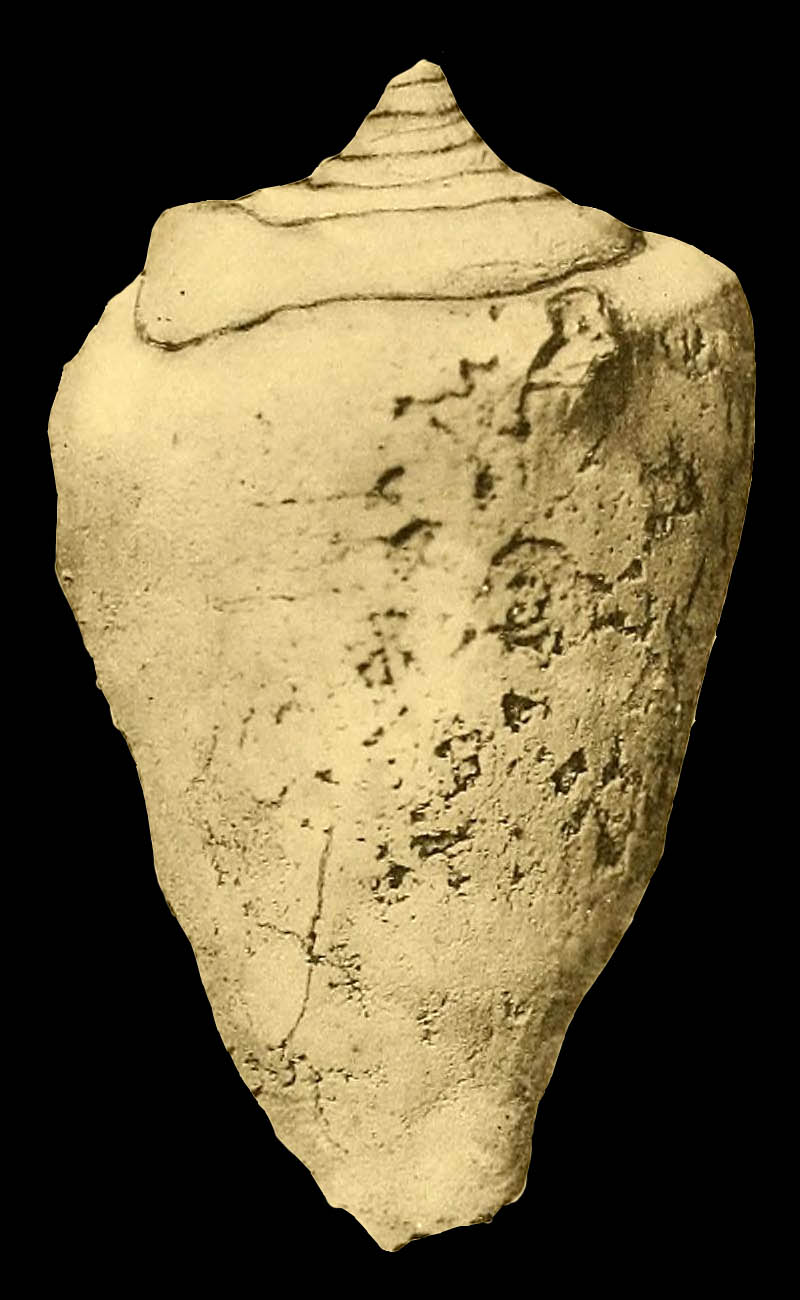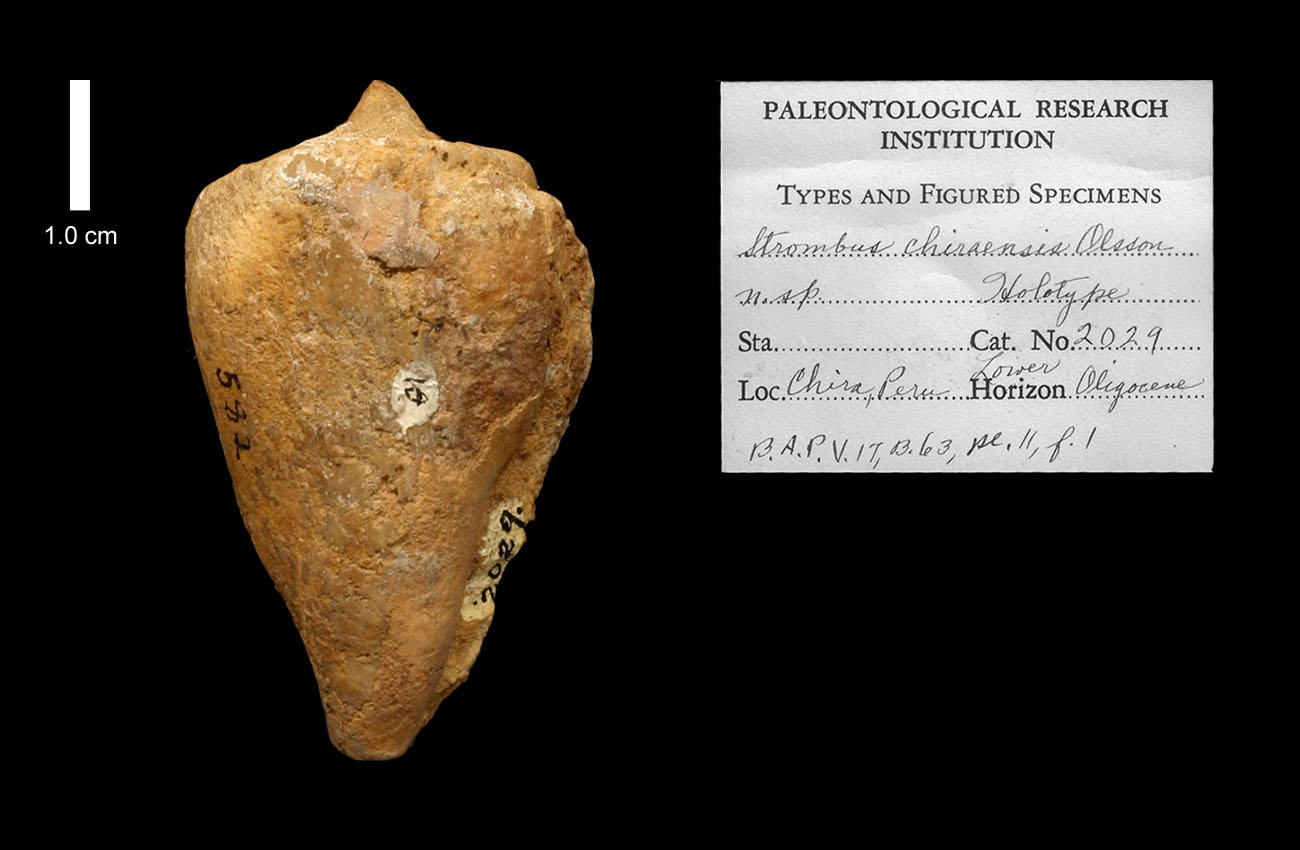Stromboidea
Original Description of Strombus chiraensis by Olsson, 1931, p. 92 (188):
- "Shell of medium size, stout, coniform; the spire of 6 or more whorls is low and flattened in the peripheral region, but with the tip or apex high and elevated; sutures deep, the last whorl descending; the earliest spire-whorls are ribbed with large varix-like ribs spaced about 120 degrees apart; the following spire-whorls are simply cone-like in form with a simple, sharp shoulder; at or approaching maturity, heavy shoulder knobs are developed on the last whorl spaced about 120 degrees apart; these shoulder knobs mark former resting stages and cover heavy callous growth at the posterior junction of the outer lip with the body-whorl; base of last whorl on full-grown shells with the anterior canal slightly recurved at its tip; surface smooth."
Dimensions: "Height 56mm.; aperture 50mm.; diameter 33mm."
Locus typicus: Casa Saman, Piura Department, Peru
Stratum typicum: Chira shales, Chira Formation, early Oligocene
Strombus chiraensis Olsson, 1931, pl. 11, fig. 1
Oostrombus chiraensis (Olsson, 1931); Holotype; Chira Formation, early Oligocene; Casa Saman, Piura Department, Peru; 53,2 mm; Coll. Paleonotlogical Research Institution no. PRI2029; Image reproduced courtesy of the Paleontological Research Institution
Comment Olsson, 1931, p. 92 (188):
- "There are 3 specimens of this peculiar fossil in our collection. The immature form is strikingly Conus-like, the shoulder is simply angled and lacks the large stromboid knobs which appear with maturity. The earliest spire-whorls (very poorly preserved on our specimens), are provided with large ribs or varices which seem to follow about 120 degrees apart. The succeeding spire-whorls are Cone-like with a plain, simple shoulder angle. With maturity, a section along the shoulder of the last whorl is trigonal with large knob-like shoulder ribs spaced about 120 degrees apart. They are partly due to excessive growth of callus at the posterior junction of the lip during resting periods. The outer lip is unfortunately broken on the larger and more mature specimen. The tip of the anterior canal is bent upward or backward in a stromboid fashion. The genus Oostrombus Sacco (genotype S. problematicus Mich.) to which this species may possibly belong, differs from typical Strombus by its straighter beak, less expanded wing and absence or very small stromboid labial sinus."
References:
- Olsson, A.A., 1931: Contributions To the Tertiary Paleontology of Northern Peru: Part 4, the Peruvian Oligocene, Bulletins of American Paleontology 17(63), Pl. 11, fig. 1


